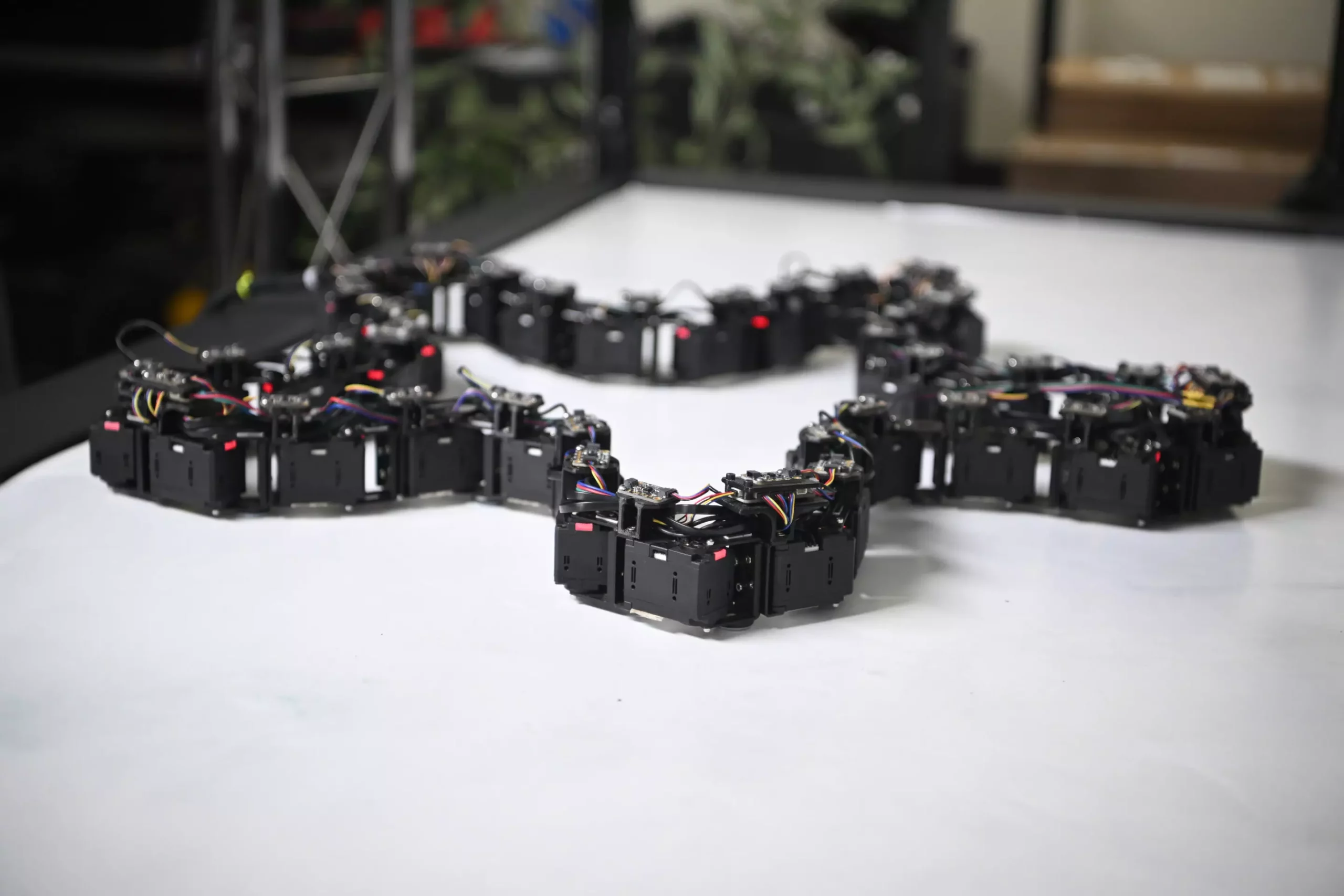The quest for true robot autonomy is a significant frontier in robotics, where researchers are constantly seeking innovative methodologies to enable machines to operate without extensive human intervention. One such innovative project emanating from West Virginia University (WVU) involves a unique concept known as Loopy. Unlike conventional robots that are primarily programmed to perform specific tasks, Loopy serves as a multicellular robot where adaptability is a key characteristic. Emerging from a thought experiment, this robot is designed to exhibit adaptive behaviors resembling those seen in nature, exploring new paradigms of robotic development.
Loopy is fundamentally composed of a series of interconnected cells, forming a circular arrangement of 36 individual units capable of responding to environmental stimuli. This self-coiling design allows the robot to manipulate its structure based on conditions around it, challenging traditional top-down methodologies that dominate robotic programming. The lead researcher, Yu Gu, emphasizes the importance of this transition from passive to active engagement, highlighting how Loopy operates as a collaborative entity where each cell, equipped with its own sensors, contributes to the overall functionality of the robot. This decentralized control mechanism draws parallel lines to swarm behavior seen in ants or other biological networks, where individual actions culminate in complex, collective responses.
The WVU team is currently conducting extensive testing to better understand how Loopy navigates various challenges in a controlled laboratory setting. The testing environment, complete with overhead cameras and temperature sensors, facilitates the exploration of Loopy’s capabilities in marking boundaries around contaminated zones, which could have far-reaching implications for environmental management and disaster response. The adaptability which Loopy seeks to embody centers around managing unforeseen scenarios and obstacles, reflecting a significant departure from traditional robotic systems that often falter in unpredictable conditions.
This innovative testing process not only examines Loopy’s accuracy in marking boundaries but also scrutinizes its responses to incomplete information. The team, guided by principles of swarm intelligence, aims to discover whether this organic methodology yields enhanced resilience and adaptability compared to pre-programmed robotic responses.
Fundamental Principles of Swarm Intelligence
The approach to developing Loopy is influenced by philosophical tenets akin to permaculture—an ecological design system promoting sustainable behaviors in agriculture by working harmoniously with natural processes. Gu invokes this concept to underline the importance of collaboration between humans, robots, and their environment, a triad that positions Loopy’s development within a more organic framework. Rather than enforcing rigid design principles, this methodology embraces the unpredictable nature of emergent behaviors, suggesting that effective solutions can arise from simpler subsystems working together.
Loopy’s potential applications stretch far beyond environmental cleanup. The ability of multicellular robots to self-organize opens avenues for interactive art displays, adaptive systems for industrial applications, and even medical devices that respond to patient conditions more dynamically. The future possibilities are promising, indicating that as research progresses, the integration of autonomous and adaptive robotic systems into various fields might transform how we approach technology and problem-solving.
While the project is steeped in optimism, it is important to recognize the inherent challenges alongside its potential. The research is characterized by nonlinear and unpredictable outcomes, which can introduce difficulties in establishing a consistent path forward. The nascent nature of swarm robotics necessitates ongoing refinement and adaptation of experimental approaches, meaning that researchers must be prepared for ambiguity and unexpected results.
Gu’s insights emphasize that unexpected outcomes are not merely obstacles, but drivers for further exploration. The continuing investigations seek to cement the foundational principles that govern Loopy’s adaptable capabilities, illuminating the lessons learned from nature to enhance robotic design.
Loopy represents a significant shift in the evolution of robotics. As a multicellular, self-coordinating entity, it challenges conventional autonomy paradigms while paving the way for more resilient and adaptive robotic systems. The exploration of decentralized control systems through inspirations drawn from biological entities marks an exciting leap into the future of robotics. As ongoing research unfolds, Loopy may well be a precursor to a new generation of robots—one that collaborates and adapts rather than simply executing commands, ultimately altering our relationship with technology and nature.


Leave a Reply